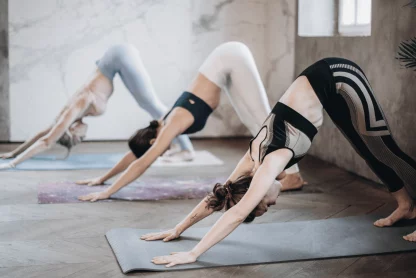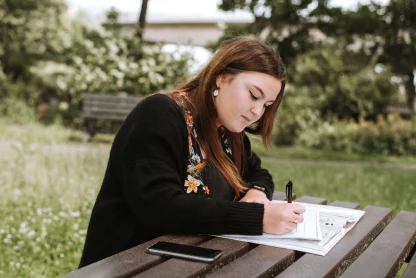Anxiety, a common emotional experience, can manifest in various forms and impact individuals of all ages. While the focus on anxiety management often centers on adults, it’s crucial to recognize that children and adolescents also grapple with this emotional challenge. This article aims to bridge the gap by exploring strategies to cope with anxiety specifically tailored for younger individuals. Drawing from insights into anxiety management and child psychology, we will delve into actionable techniques that parents, caregivers, and educators can implement to help children navigate the complexities of anxiety in their everyday lives. By acknowledging the unique needs of children and providing them with effective tools, we can empower the younger generation to cultivate resilience, emotional well-being, and a stronger sense of self amidst the uncertainties of the modern world.
Table of Contents
- Understanding Anxiety: Unraveling the Emotion
- Embracing Self-Awareness: Recognizing Your Triggers
- Mindful Breathing Techniques: Finding Calm in the Chaos
- Rewiring Negative Thought Patterns: Cognitive Restructuring
- The Power of Cognitive Restructuring: A Paradigm Shift
- Identifying Negative Thought Patterns: A Journey within
- Examining Evidence: Challenging Distorted Beliefs
- Constructing Rational Alternatives: Building a Positive Framework
- Mindful Practice: Cultivating a Resilient Mindset
- A Journey towards Empowerment
- Creating a Sanctuary: Designing Your Stress-Free Space
- Time Management for Tranquility: Organizing Your Day
- Understanding Time Management’s Impact: A Psychological Perspective
- Prioritization: A Key Component of Time Management
- Creating a Schedule: Balancing Responsibilities and Self-Care
- Setting Boundaries: Fostering Work-Life Balance
- Mindful Time Management: Embracing Present-Moment Focus
- Orchestrating Tranquility through Time
- Social Support Systems: Nurturing Connections that Heal
- Engaging in Physical Wellness: Exercise for Emotional Resilience
- Mindfulness in Action: Applying Techniques to Daily Tasks
- Celebrating Progress: Small Steps towards a Peaceful Mindset
- Frequently Asked Questions

Understanding Anxiety: Unraveling the Emotion
Anxiety is a universal human experience that can serve as a helpful signal or turn into an overwhelming emotion. In this article, we explore the intricate facets of anxiety, shedding light on its origins and how it manifests in our everyday lives.
The Science of Anxiety: A Complex Interplay
Studies emphasize that anxiety is deeply rooted in our evolutionary history, playing a role in our survival mechanisms. It alerts us to potential threats, preparing us for the fight-or-flight response.
Types of Anxiety: A Spectrum of Emotions
Anxiety isn’t a one-size-fits-all emotion. It encompasses various forms, including generalized anxiety disorder, social anxiety, and panic disorder. Understanding these nuances is crucial for effective coping.
The Physical and Mental Connection: Body and Mind Interaction
Research highlights the mind-body connection in anxiety. The body’s physical response to stress can intensify anxiety, while anxiety itself can trigger physiological reactions.
Identifying Triggers: Unveiling Personal Stressors
Anxiety triggers can vary greatly from person to person. Identifying your triggers—whether they’re related to work, relationships, or personal expectations—is the first step towards managing anxiety.
The First Step Towards Coping
Understanding anxiety is the foundation for effective coping strategies. By comprehending its evolutionary roots, recognizing its various forms, acknowledging the mind-body connection, and identifying personal triggers, you pave the way for a journey towards managing anxiety in your everyday life.
Embracing Self-Awareness: Recognizing Your Triggers
Navigating anxiety requires a deep understanding of oneself and the triggers that can set off its waves. Here, we explore the significance of self-awareness in identifying and managing anxiety triggers for a more balanced and empowered life.
The Insightful Connection: Self-Awareness and Anxiety
Studies highlight that self-awareness is a cornerstone of emotional regulation. Being attuned to your emotions and responses enables you to identify anxiety triggers and take proactive steps.
Exploring Personal Triggers: A Journey Within
Every individual’s triggers are unique. By reflecting on past experiences and paying attention to patterns, you can uncover situations, thoughts, or environments that tend to exacerbate your anxiety.
Internal and External Triggers: A Comprehensive Approach
Anxiety triggers can be internal, stemming from thoughts and emotions, or external, arising from certain situations or people. Recognizing both types empowers you to address them holistically.
Emotional Responses: Navigating Your Reactions
Be attuned to your emotional responses when encountering triggers. Note how anxiety affects your thoughts, feelings, and behaviors. This awareness lays the groundwork for effective coping strategies.
Personal Growth: Transforming Triggers into Opportunities
Research suggests that self-awareness can lead to adaptive changes in behavior and emotional regulation. By understanding triggers, you can transform them into opportunities for growth and resilience.
A Journey Towards Empowerment
Embracing self-awareness is a crucial step in managing anxiety triggers. By recognizing their connection to anxiety, exploring personal triggers, distinguishing internal and external factors, understanding emotional responses, and using triggers as catalysts for growth, you embark on a transformative journey towards empowerment and emotional well-being.
Mindful Breathing Techniques: Finding Calm in the Chaos
In the whirlwind of everyday life, finding moments of calm can be challenging. This article explores the transformative potential of mindful breathing techniques as a powerful tool to manage anxiety and restore a sense of tranquility.
The Science of Breath: A Gateway to Relaxation
The research underscores the physiological connection between deep breathing and reduced stress. Mindful breathing activates the body’s relaxation response, easing tension and anxiety.
Practice Makes Perfect: The Art of Mindful Breathing
Engaging in mindful breathing involves focusing on your breath as it moves in and out. Studies suggest that this practice enhances parasympathetic activity, fostering relaxation.
Counting Your Breaths: A Simple Technique
One mindful breathing technique involves counting your breaths. Inhale deeply through your nose for a count of four, hold for four, exhale for four, and hold for four. This rhythmic pattern engages your attention and promotes relaxation.
Grounding in the Present: Anchoring with Breath
Mindful breathing grounds you in the present moment, diverting your focus from anxious thoughts. This technique encourages a shift from the future-oriented worries that often fuel anxiety.
Integrating Mindful Breathing: An Everyday Practice
Incorporate mindful breathing into your daily routine. Whether during moments of stress, before important events, or simply as a part of your morning routine, these techniques can foster a lasting sense of calm.
A Breath of Fresh Calm
Mindful breathing techniques offer a pathway to finding calm amid the chaos of life. By understanding the science behind breath, practicing techniques such as breath counting, grounding in the present, and integrating mindful breathing into your daily life, you empower yourself with a reliable tool to manage anxiety and nurture well-being.
Rewiring Negative Thought Patterns: Cognitive Restructuring
Unraveling the grip of anxiety often requires reexamining the way we perceive and process our thoughts. Here we dwelve into the transformative technique of cognitive restructuring, offering insights into rewiring negative thought patterns for a more balanced mindset.
The Power of Cognitive Restructuring: A Paradigm Shift
Identifying Negative Thought Patterns: A Journey within
Begin by recognizing automatic negative thoughts (ANTs) that fuel anxiety. These may include catastrophizing, overgeneralization, and self-criticism. Awareness is the first step toward change.
Examining Evidence: Challenging Distorted Beliefs
Empirical research suggests that challenging negative beliefs with evidence fosters a more balanced perspective. Ask yourself: Is there evidence to support or contradict this negative thought?
Constructing Rational Alternatives: Building a Positive Framework
Cognitive restructuring involves developing rational alternatives to negative thoughts. For instance, replace “I’ll fail this presentation” with “I’ve prepared well and can handle challenges.”
Mindful Practice: Cultivating a Resilient Mindset
Consistent practice is essential. Whenever a negative thought arises, pause and apply cognitive restructuring. Over time, this process becomes second nature, fostering a more resilient and empowered mindset.
A Journey towards Empowerment
Cognitive restructuring offers a dynamic approach to combating anxiety by rewiring negative thought patterns. By understanding the technique’s foundations, identifying negative thought patterns, challenging beliefs, constructing rational alternatives, and embracing mindful practice, you embark on a transformative journey toward empowerment and mental well-being.
Creating a Sanctuary: Designing Your Stress-Free Space
In the journey to cope with anxiety, your physical surroundings play a crucial role in shaping your emotional well-being. This article explores the concept of creating a stress-free space and how it can significantly impact your ability to manage anxiety.
Environmental Psychology: Influence on Well-being
Studies suggest that our environment can affect our cognitive functioning and emotional state. Designing a stress-free space is an effective way to support your mental health.
Design Principles for Serenity: Simplicity and Order
Consider the layout and organization of your space. Incorporate minimalistic design principles with organized spaces and clutter-free zones to foster a sense of calm.
Calming Colors and Natural Elements: An Oasis of Tranquility
Personalization and Comfort: Nurturing a Sense of Belonging
Make your stress-free space uniquely yours. Surround yourself with items that evoke positive emotions and memories, cultivating a sense of comfort and security.
Technology-Free Zones: Disconnecting for Mindfulness
Create boundaries for technology. Designate areas in your space where you disconnect from screens, fostering mindfulness and reducing digital-induced stress.
Crafting Your Haven of Calm
Designing a stress-free space is a powerful strategy in managing anxiety. By understanding the influence of your environment, embracing simplicity, incorporating calming elements, personalizing your space, and establishing technology-free zones, you cultivate a haven of calm that supports your emotional well-being.
Anxiety triggers can vary greatly from person to person. Identifying your triggers—whether they’re related to work, relationships, or personal expectations—is the first step towards managing anxiety
Time Management for Tranquility: Organizing Your Day
In the modern hustle and bustle, managing time effectively can significantly impact our ability to cope with anxiety. Here, we delves into the importance of time management as a strategy to create a tranquil and balanced life.
Understanding Time Management’s Impact: A Psychological Perspective
Prioritization: A Key Component of Time Management
Begin by identifying your priorities. List tasks and responsibilities, distinguishing between urgent and important matters. This practice empowers you to allocate time wisely.
Creating a Schedule: Balancing Responsibilities and Self-Care
Design a daily or weekly schedule that balances work, responsibilities, and self-care. Incorporate breaks and moments of relaxation to prevent burnout.
Setting Boundaries: Fostering Work-Life Balance
Mindful Time Management: Embracing Present-Moment Focus
Engage in tasks mindfully. When you’re fully present, you enhance efficiency and reduce the tendency to worry about future tasks.
Orchestrating Tranquility through Time
Time management is a potent tool in coping with anxiety. By understanding its psychological impact, prioritizing tasks, creating schedules, setting boundaries, and embracing mindfulness, you orchestrate a life of tranquility, where anxiety takes a back seat to purposeful living.
Social Support Systems: Nurturing Connections that Heal
Amid the complexities of modern life, forging meaningful connections with others becomes a vital strategy for coping with anxiety. This article explores the profound impact of social support systems on our ability to manage anxiety and lead a balanced life.
The Science of Social Support: A Buffer against Anxiety
Cultivating Strong Relationships: Quality over Quantity
Rather than focusing solely on the number of connections, prioritize the quality of relationships. Close friends and family members who provide genuine support can serve as pillars of strength.
Sharing and Empathy: An Outlet for Anxiety
Studies emphasize the role of social support in reducing the perception of threat, which is often associated with anxiety. Sharing your thoughts and feelings with empathetic individuals can provide relief.
Online and Offline Networks: A Hybrid Approach
Leverage both online and offline networks. Virtual communities and social media platforms can connect you with like-minded individuals who understand your experiences.
Reciprocity: Strengthening Bonds through Mutual Support
Offer support as much as you receive it. Being part of a reciprocal relationship enhances a sense of belonging and fosters a positive cycle of mutual assistance.
Weaving a Web of Support
Nurturing social support systems is a profound strategy in coping with anxiety. By understanding the science, prioritizing quality relationships, sharing with empathy, embracing both online and offline connections, and practicing reciprocity, you weave a web of support that enriches your life and bolsters your ability to manage anxiety.
Engaging in Physical Wellness: Exercise for Emotional Resilience
In the pursuit of coping with anxiety, physical wellness emerges as a potent ally. We explore the profound connection between exercise and emotional resilience, shedding light on how engaging in physical activity can bolster your ability to navigate life’s challenges.
The Exercise-Emotion Link: A Scientific Perspective
Elevating Mood: The Endorphin Effect
Endorphins, often referred to as “feel-good” chemicals, are released during exercise. They interact with receptors in your brain, reducing stress and enhancing feelings of pleasure.
Serotonin Boost: The Mood-Stabilizing Neurotransmitter
Exercise also promotes the release of serotonin, a neurotransmitter associated with mood regulation. Higher serotonin levels can lead to reduced anxiety and increased emotional resilience.
Mind-Body Connection: Fostering Mindfulness through Movement
Engaging in physical activity encourages mindfulness. As you focus on your body’s movement, you divert your attention from anxiety-inducing thoughts, promoting a sense of calm.
Tailored Approach: Finding Joy in Movement
Choose an exercise routine that resonates with you. Whether it’s yoga, jogging, dancing, or swimming, find activities that bring you joy, making it more likely you’ll stick with them.
Nurturing Emotional Resilience Through Movement
The link between exercise and emotional resilience is undeniable. By understanding the scientific connection, embracing the endorphin and serotonin effects, fostering mindfulness, and tailoring your approach to movement, you embark on a journey that not only enhances your physical wellness but also equips you with the tools to cope with anxiety more effectively.
Mindfulness in Action: Applying Techniques to Daily Tasks
Amid the chaos of everyday life, cultivating mindfulness can be a transformative strategy to cope with anxiety. This article delves into the practice of infusing mindfulness into daily tasks, offering practical techniques to enhance your emotional well-being.
Mindfulness and Anxiety Reduction: A Scientific Perspective
Mindful Moments: Elevating the Mundane
Approach routine tasks with mindfulness. Whether it’s brushing your teeth, sipping tea, or walking, pay full attention to the sensations, sounds, and sights involved.
Breath Awareness: Anchoring to the Present
Use your breath as an anchor to the present moment. When you find your mind drifting into anxious thoughts, return your focus to your breath, grounding yourself in the now.
Sensory Immersion: Engaging the Senses
Engage your senses fully in whatever you’re doing. Feel the texture of objects, savor the taste of food, and relish the aroma of nature. This sensory immersion grounds you in the present.
Single-Tasking: Embracing Depth over Multitasking
Challenge the habit of multitasking. Dedicate your full attention to one task at a time. This promotes a sense of accomplishment and reduces anxiety-inducing overwhelm.
The Practice of Mindful Presence
Infusing mindfulness into daily tasks is a gateway to emotional well-being. With a scientific foundation, mindful moments, breath awareness, sensory immersion, and the embrace of single-tasking, you embark on a journey of heightened awareness that allows you to effectively cope with anxiety and find serenity in the midst of life’s demands.
Celebrating Progress: Small Steps towards a Peaceful Mindset
In the quest to cope with anxiety, acknowledging small steps forward can be a powerful strategy. This article delves into the significance of celebrating progress and offers insights on how even the tiniest achievements can contribute to cultivating a peaceful mindset.
Positive Psychology and Progress: A Scientific Perspective
The Power of Incremental Steps: Redefining Success
Shift your perspective on progress. Instead of focusing solely on major milestones, recognize the value of every small achievement on your journey.
Mindful Reflection: Savoring the Victories
Take time to reflect mindfully on your achievements, no matter how small. This practice cultivates a sense of self-appreciation and contributes to a calmer state of mind.
Tracking Progress: A Visual Reminder of Growth
Maintain a progress journal or a visual board where you document your achievements. This tangible representation can serve as a reminder of your journey and boost your confidence.
Self-Compassion: Embracing Imperfection
Practice self-compassion as you celebrate progress. Understand that setbacks are part of the journey, and each step contributes to your growth.
Nurturing a Peaceful Mindset through Progress
Celebrating progress is a profound way to nurture a peaceful mindset amidst anxiety. With the scientific foundation of positive psychology, a shift in perspective, mindful reflection, progress tracking, and self-compassion, you embark on a path of self-discovery and growth that paves the way for greater emotional well-being.
Frequently Asked Questions
Yes, lifestyle changes can significantly reduce general anxiety levels. Regular exercise is a natural anxiety reducer, as it releases tension and promotes the release of neurotransmitters that enhance mood. Adequate sleep is crucial; aim for 7-9 hours per night to support emotional well-being. Limiting caffeine and alcohol intake can help regulate your nervous system and minimize anxiety triggers. Engaging in relaxation techniques like progressive muscle relaxation or guided imagery can counteract physical symptoms of anxiety. Developing healthy coping mechanisms, such as talking to a therapist, journaling, or engaging in creative outlets, enhances resilience against anxiety.
Managing anxiety in social situations or public speaking requires a combination of psychological and behavioral strategies. Practice exposure therapy by gradually exposing yourself to social situations, starting with less intimidating ones and working your way up. Develop relaxation techniques, like deep breathing or visualization, that you can use in the moment to manage physical symptoms. Shift your focus from internal thoughts to external observations, like paying attention to the topic of conversation or the surroundings. Rehearse and prepare thoroughly for public speaking engagements, which can boost your confidence. Remember that everyone experiences some level of nervousness, and seeking professional help, such as cognitive-behavioral therapy, can provide tailored strategies for overcoming social anxiety.
Yes, technology can be a valuable tool in managing everyday anxiety. Meditation and mindfulness apps provide guided sessions for relaxation and stress reduction. Journaling apps offer a private space to express thoughts and emotions, aiding self-reflection. Breathing apps teach deep-breathing techniques for immediate anxiety relief. Mood-tracking apps help identify patterns in anxiety triggers and mood changes. However, it’s essential to balance technology use with real-world interactions and activities.
Preventing anticipatory anxiety involves proactive strategies. Visualize successful outcomes; imagine yourself handling the situation with confidence. Focus on the present moment using grounding techniques, like listing five things you can see, four things you can touch, three things you can hear, two things you can smell, and one thing you can taste. Practice relaxation techniques, such as progressive muscle relaxation or controlled breathing, to manage physical symptoms. Develop a pre-event routine that includes calming activities to reduce anxiety.









